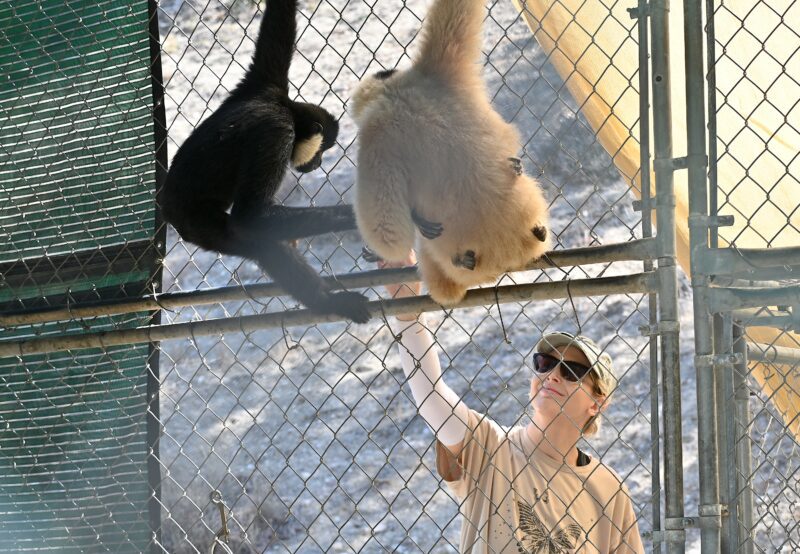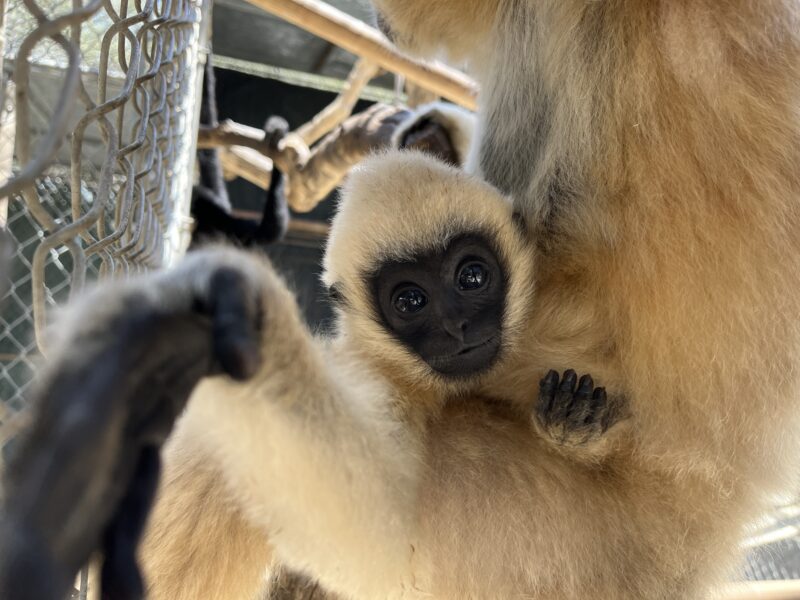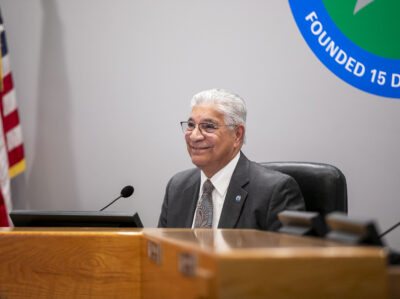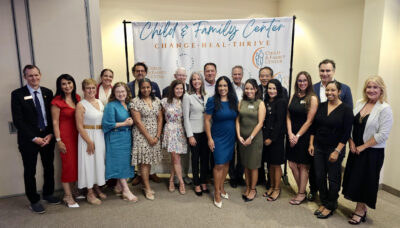A 14-year-old gibbon named Lucia, 15-year-old Canter and their newborn baby gibbon, holding tightly to her mother, hung from the fencing of their enclosure at the Gibbon Conservation Center in Saugus and waited for the food that was coming their way.
It was a warm July morning, much drier than the rainforests of India, Bangladesh, southeast Asia and southern China, where gibbons, which are small arboreal apes, naturally live. Gabriella Skollar, director at the center, said the baby gibbon was born on May 8 at the gibbon center and has yet to be given a name. She said that, in the past, staff members have named infants, or long-time donors have requested to name them, offering a $1,500 donation to do so.
“My idea,” she said, “is that maybe the community wants to name the baby.”
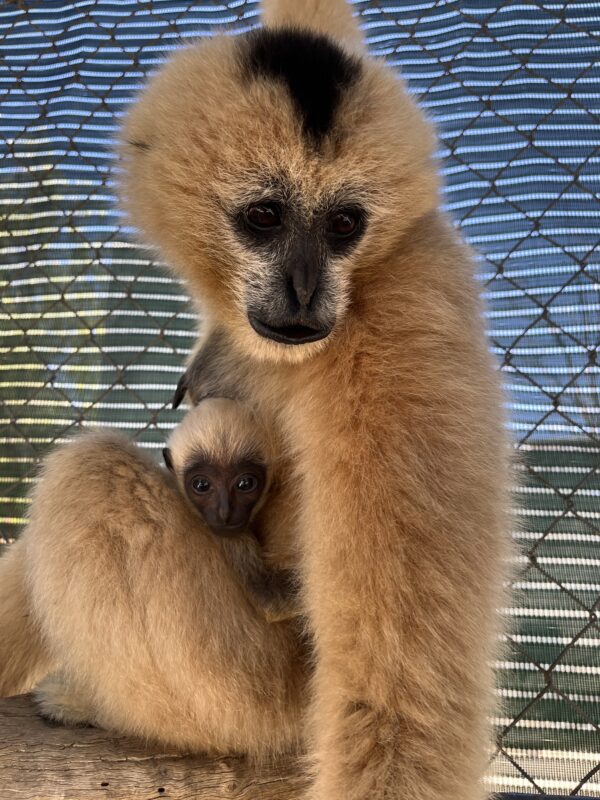
According to Skollar, the Gibbon Conservation Center houses five species, including the eastern hoolack, the siamang, the Javan and the pileated gibbons. The world hosts 20 known gibbon species, 19 of which, she said, are endangered.
Lucia, Canter, their baby and their son, Winkie, who’s 4 years old, are northern white-cheeked gibbons. Skollar added that they make up four of about 1,000 of their kind left in the world.
The family shares an enclosure together at the center. According to Skollar, that’s typical.
“They (gibbons) live in nuclear families,” she said. “And the whole family will take care of the kid. So, the mother provides the primary care, but the dad and the older siblings will also groom the baby and share food with them. They might even carry them.”
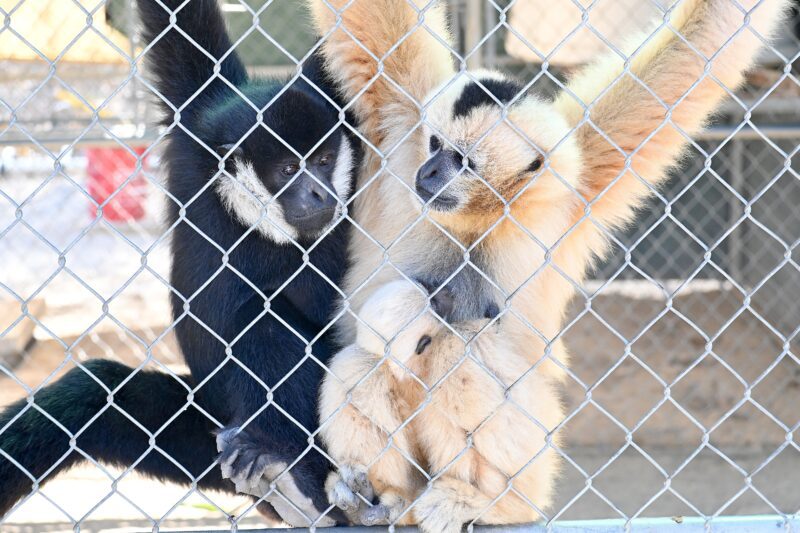
Skollar said that if Lucia and Canter had another baby, they’d likely do so in another three or four years. At that point, Winkie would be old enough to move out, hopefully into an enclosure with a mate, if a mate is identified. That’s the goal.
The center is trying to match two other gibbons. Skollar spoke about a 6-year-old female gibbon at the center who, in a couple years, will be paired up with a particular male gibbon in an enclosure just for them to hopefully have babies to keep the species going. According to Skollar, matching gibbons isn’t an easy task.
“They look at how they are related, and look at their age,” she said. “These two are a good genetic match — Dennis and Anastasia. They’re also in the right age range. They just have to wait. Anastasia is still a little bit young. She hasn’t started her second color change.”
Skollar added that young gibbons usually leave their parents around the age of 8 or 9. However, in the case of a 2-year-old named Rocky, his mother rejected him. Rocky lives in an enclosure by himself, but next to another enclosure that houses his brother.
Rocky, Skollar said, sleeps with a teddy bear in the center’s office. Rocky’s brother had been paired with another gibbon, but that match didn’t work out. Such arrangements sometimes fail.
Sometimes matches are made outside of the center, Skollar said, and even outside of the country, adding that it can be a long, tedious process.
The Gibbon Conservation Center has another newborn. Ardith, a northern white-cheeked gibbon, was born on Dec. 14 at the center to her mom, Astriks, and her dad, Pierre. On the recent July morning at the center, Astriks — with Ardith wrapped around her — was perched atop a cross beam in the family’s enclosure when a gibbon duet song in one of the nearby enclosures broke out.
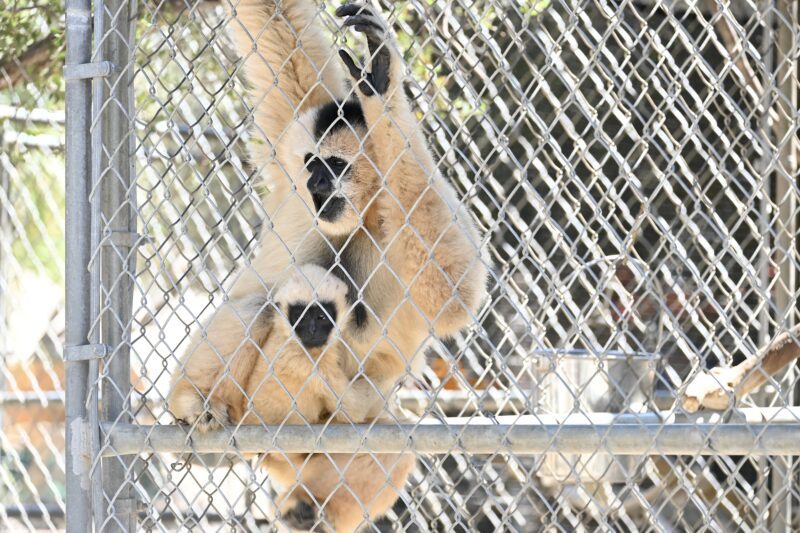
Gibbons do this a couple of times a day — usually in the morning and again in the evening. It serves as a way for gibbons to defend their territory. According to Skollar, Pepper, who’s Canter’s younger sister in the enclosure next to his enclosure, typically starts the duets. Not this time. Another gibbon got it going, and the singing grew from enclosure to enclosure. It was loud. And it lasted about 20 minutes. Then it just stopped.
The Gibbon Conservation Center is run by a staff of five people with help from volunteers from time to time. It was founded in 1976 by Alan Mootnick, who was, according to the center’s website, a global authority on gibbon biology, taxonomy and captive care.
According to a sign on the property, the center offers public tours, private tours, camping and other events.
Skollar said some people believed the center moved some years back. Many people stopped visiting.
“We were renting the land for many years,” she said. “For a while, we were planning to move. We ended up purchasing this site.”
The center is open to the public on weekends. For more information or to get tickets for a visit, go to GibbonCenter.org.
